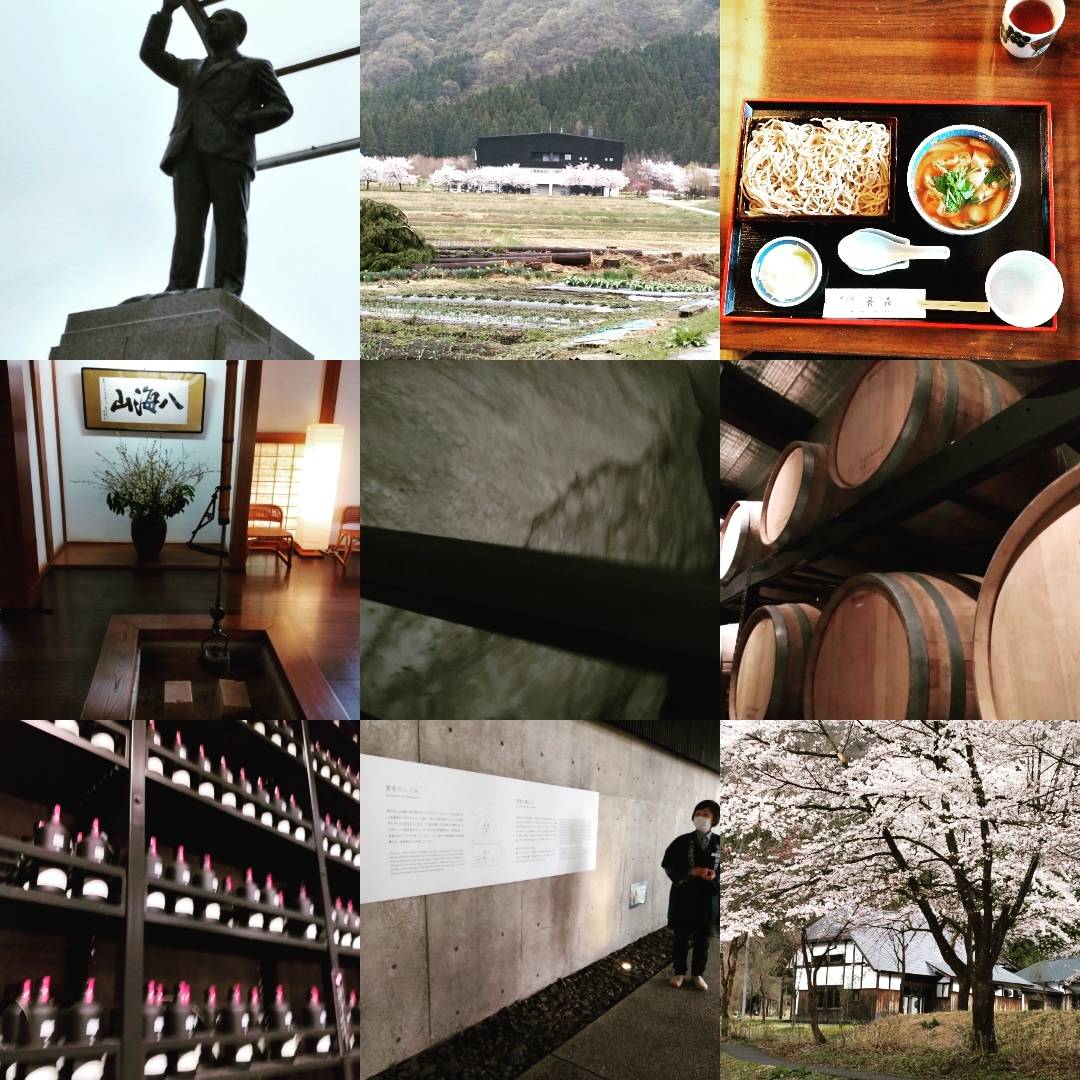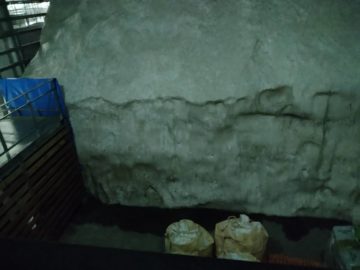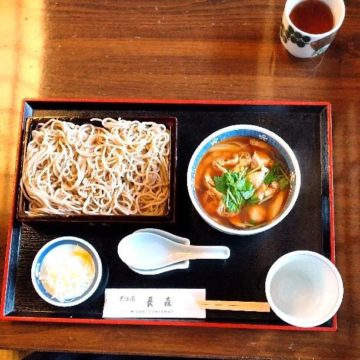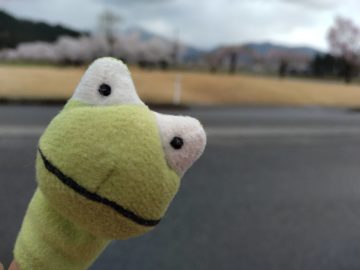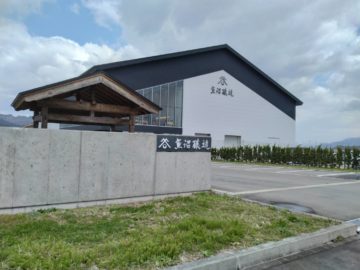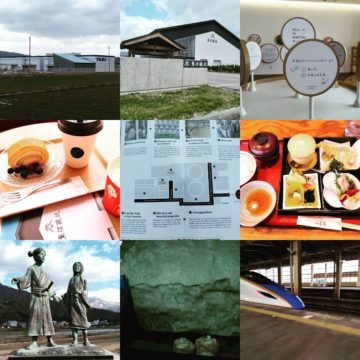【発酵ソムリエ】新潟の魚沼米どころで「発酵蔵見学」ふたつ!
外食産業が育たない地域は、辛口淡麗を家で飲むから・・・
先ず、有名な八海山へ。日本人のアルコール離れは、人口が少子高齢化社会になるに従い、追っても仕方がないと思われます。
そこで、最近はニセコで訪日外国人用にウィスキーを作り始めました。
何故、日本酒蔵の八海山が貯蔵にこだわるのか?そこには、雪室貯蔵の歴史がありました。
八海山の雪室貯蔵は、日本酒をまろやかにする効果があるとされています。
雪室貯蔵とは、日本の北陸地方にある八海山の蔵元が、冬季に酒を外気から隔離した雪の中に保管するという伝統的な製法です。
八海山 「魚沼の里」
↓↓ ↓↓ ↓↓
https://www.uonuma-no-sato.jp/
この貯蔵方法が酒をまろやかにする理由については、いくつかの説がありますが、一般的には以下のような説明がされています。
まず、雪室貯蔵によって温度が一定に保たれ、酒の味わいが安定するとされています。
また、雪の中で酒がゆっくりと熟成されることで、酒の味わいに深みが生まれ、まろやかさが増すとされています。
さらに、雪室貯蔵によって酒の分子が小さくなるという説もあります。
これは、雪の中で酒が凍ることによって水分が氷となって分離し、アルコール分が濃縮されるためとされています。
また、低温で酒が保存されることで、酸化や細菌の繁殖が抑えられ、酒の品質が保たれるともされています。
雪室には、2万リットル 20基のタンクがありました。粕取り焼酎は、ボトルキープされて陳列されています。メモリアル焼酎にはシリアル番号
洞窟内で酒を貯蔵することによって、酒の味わいがまろやかになるという報告や実験結果があります。
これが当協会の「酒の発酵」カードゲームに取り入れているアイディアです。
洞窟内で酒を貯蔵する場合、一般的には、温度や湿度の変化が少なく、風通しもよく、酸素の量も少ないといった環境下にあります。
このような環境においては、酒の醸造に影響を与える微生物の発生が抑えられ、酒が安定して保存されるという特徴があります。
また、洞窟内では酒を貯蔵するための壁や床の材料として、石灰岩や花崗岩、砂岩などが使われており、
これらの岩石に含まれるミネラル成分が酒に移り、味わいの変化に寄与すると考えられています。
さらに、洞窟内の環境には微量の振動や騒音があり、これが酒の分子に微小な振動を与えることで、酒の味わいが変化する可能性があるとも言われています。
ワインを海の奥底に沈めるという方法は、日本の沖縄県で生産される焼酎「くーすー」という酒に用いられている手法であり、古くから行われています。
くーすーは、琉球王朝時代から伝わる製法で、焼酎を陶器製の壺に入れ、海底に沈めて1年以上寝かせることによって、酒をまろやかにするとされています。
この製法によって、海水の圧力と温度の変化によって、焼酎の味わいに深みが加わるとされています。
このような海底での貯蔵方法は、古くから世界中で行われており、特にヨーロッパでは船積みされたワインやシャンパンなどを海底に沈めて保存することが行われていました。海水の温度や圧力、酸素の影響で、酒の風味が変化し、よりまろやかな味わいになるとされています。
以上、熟成を樽の中で行うだけでなく場所も寒くて頑丈なところにおく、というコンセプトで古いお酒をまろやかにし、値段が高いものになります。
そうです。日本酒は、生で作りたて、古いと価値がないというのは日本だけのものなので、ここを逆転させないと高いものに付加価値をつけて売れないのです。
#八海山 #雪室貯蔵 #生き残り戦略 #古い方が価値がある世界 #発酵ソムリエ
二つ目は、田中角栄像がたっている浦佐駅から「魚沼醸造」へ。ここは、なんと、マルコメ味噌で有名なマルコメさんの糀工場でした。
魚沼醸造
↓ ↓↓ ↓↓↓ ↓↓↓↓
https://www.uonuma-jozo.co.jp/index.html
そういえば、発酵ソムリエの出版記念パーティーでもマルコメさんから甘酒を販促品でいただき、皆様に配りました。そのとき、これから糀文化を広げるとおっしゃっていました。
ここは、キッコーマンでみた円盤式の完全無人化した糀ムロを使い、ごはんをむして、昔ながらの糀をとかす方法で甘酒を大量生産する工場でした。
灘の大きな酒蔵と同じくダクトの中を米やもろみが通ってきます。そして、噴射式パイプで糀(菌)をふきつけるのも同じでした。
都度、X線や非破壊検査装置があり、人を使わずオートメーション化でつくる「あま糀」です。そして、ブランド力を使いスイーツがたくさん。
違う世界をのぞいた気分です。
#八海山 #雪室貯蔵 #生き残り戦略 #古い方が価値がある世界 #発酵ソムリエ
Fermentation Sommelier] Two “Fermentation Brewery Tours” in Niigata’s Uonuma rice-producing region!
In a region where the restaurant industry does not thrive, because people drink dry, light sake at home…
First, we went to the famous Hakkaisan. As the population of Japan ages and the birthrate declines, it seems inevitable that the Japanese are turning away from alcohol.
So recently, Niseko has started making whiskey for foreigners visiting Japan.
Why does Hakkaisan, a sake brewery, care about storage? There is a history of snow chamber storage.
Hakkaisan’s snow chamber storage is believed to have the effect of mellowing sake.
Snow cellar storage is a traditional method used by Hakkaisan breweries in the Hokuriku region of Japan, where sake is stored in snow during the winter, isolated from the outside air.
Hakkaisan “Uonuma-no-sato
↓ ↓ ↓ ↓ ↓ ↓ ↓ ↓ ↓ ↓ ↓
https://www.uonuma-no-sato.jp/
There are several theories as to why this storage method mellows the sake, but the general explanation is as follows.
First, it is believed that snow storage keeps the temperature constant and stabilizes the flavor of sake.
Also, the slow maturation of sake in the snow is said to deepen and mellow the flavor of the sake.
It is also believed that the molecules of sake become smaller when stored in a snow cellar.
This is believed to be due to the fact that when sake freezes in the snow, the water content is separated as ice and the alcohol content is concentrated.
It is also believed that the low temperatures used to store sake also prevent oxidation and bacterial growth, thereby preserving the quality of the sake.
There were 20 tanks of 20,000 liters in the snow chamber. The shochu made from sake lees is kept in bottles and displayed. Memorial shochu has a serial number.
There are reports and experiments showing that storing sake in caves mellows the flavor of the sake.
This is the idea that we have incorporated into our “Fermenting Sake” card game.
When sake is stored in a cave, it is generally in an environment with little variation in temperature and humidity, good ventilation, and low oxygen content.
In such an environment, the outbreak of microorganisms that can affect sake brewing is reduced and sake is stored in a stable manner.
In addition, limestone, granite, and sandstone are used as materials for the walls and floors of the caves to store sake,
It is believed that the mineral components in these rocks are transferred to the sake and contribute to the change in flavor.
It is also believed that the environment inside the caves has trace amounts of vibration and noise, which may cause minute vibrations in the molecules of the liquor, which in turn may alter the flavor of the liquor.
Submerging wine in the depths of the ocean is a long-established method used for a type of shochu called kusu, produced in Okinawa, Japan.
Kusu is a method handed down from the Ryukyu Dynasty, in which shochu is placed in a ceramic pot and submerged at the bottom of the ocean for at least one year to mellow the liquor.
This process is said to add depth to the flavor of the shochu due to the pressure of the seawater and changes in temperature.
This method of seabed storage has been used around the world since ancient times, especially in Europe, where shipped wine and champagne were stored by submerging them in the seabed. It is believed that the temperature, pressure, and oxygen of the seawater change the flavor of the liquor, giving it a more mellow taste.
The above concept, where the aging is not only done in barrels but also the location is kept in a cold and sturdy place, mellows out the old liquor and makes it more expensive.
That is right. Sake is fresh oriented drink, freshly made, and old sake has no value in Japan, so unless we turn this around, we will not be able to add value to expensive sake and sell it.
We make beer, sake, and fermented foods, but we are currently brewing whiskey, which will make its debut in two years.
Second, from Urasa Station, where a statue of Mr. Kakuei Tanaka stands, we went to Uonuma Brewery. This was the malt factory of Marukome, which is famous for Marukome Miso.
Uonuma Brewery
↓ ↓ ↓ ↓ ↓ ↓ ↓ ↓↓↓↓
https://www.uonuma-jozo.co.jp/index.html
Come to think of it, Marukome gave us amazake as a promotional gift at the party to commemorate the publication of “Fermentation Sommelier,” and we handed them out to everyone. At that time, they said they would expand the malt culture in the future.
This was a factory where amazake is mass-produced by using a disk-type completely unmanned malt muro(room), which I saw at Kikkoman, to boil rice and comb the malt in the old-fashioned way.
Rice and mash come through a duct just like in the big sake breweries in Nada. And it was the same way to spray koji-malt (bacteria) with a jet pipe.
Each time, there were X-rays and non-destructive inspection equipment, and “ama-koji” was made through automation without the use of human workers. And there are many sweets using the power of the brand.


